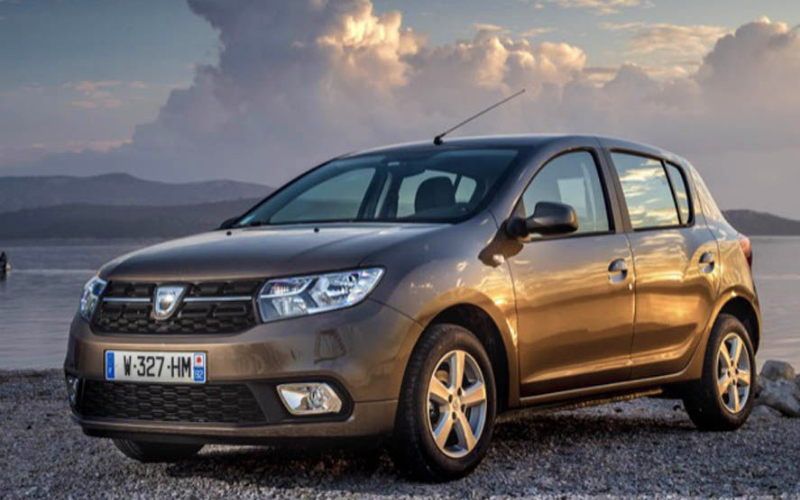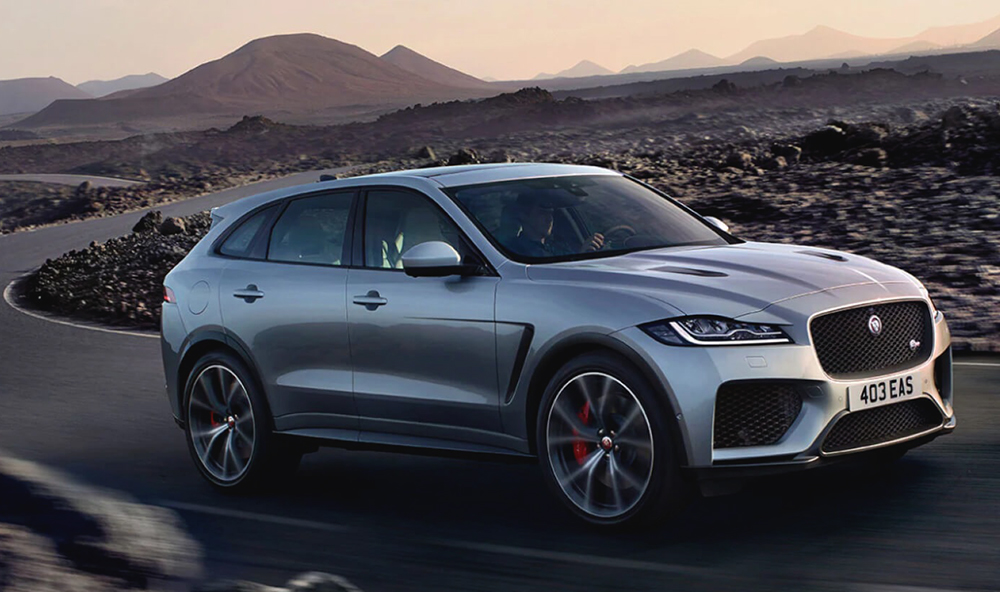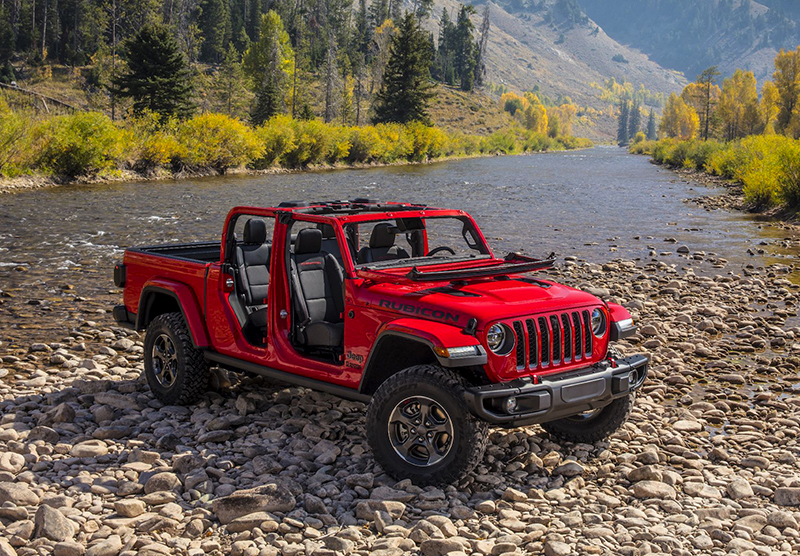The world is a diverse place. Differing environment, cultures and personal tastes mean that the things we like and dislike, approve and disapprove of, celebrate and mourn, are all different. The automotive world is no exception to this general rule. What, then, are the best-selling models around the world? What is the car that most excites the many populations and national identities across the Earth? That’s the core question we are endeavoring to explain in today’s blog.
Beyond that, we also want to consider the factors that help to explain the differing tastes in vehicles. Why is it that even countries at the same economic level and with similar cultures like Canada, the UK and Australia, all have differing ideas on what constitutes “the ideal car”?
Which Model is the Most Popular in Each Market?
Below we’ll explore some of the world’s biggest and most lucrative automotive markets and find out what the top-selling model is, and also what types of car stand out as popular, even if not numerically the single-most sold model in that area.
United States
America has long been the most important market for just about every auto maker in the world. The United States is a nation of drivers, with the average driver completing about 13,500 miles per year on average, at least 3,500 miles more than the highest average of 10,000 in countries like the United Kingdom.
The United States car market is very mixed with people living in both cities and in rural areas, but the most popular single vehicle by sales alone is the Ford F-Series of pickup trucks, with total sales of 787,422 units according to caranddriver.com. Even after a 12 percent decrease in sales in the wake of the pandemic, Ford’s much-loved truck remains the most popular vehicle on the market.
In fairness, however, the F-Series comprises several models. Outside of the pickup truck series, the most popular model in 2020 was by far the Toyota RAV4 crossover SUV. The RAV4 sold 430,387 units.
United Kingdom
Though a relatively small country, residents of the United Kingdom are also big fans of car ownership. For the population of roughly 65 million people, there are more than 30 million registered vehicles on the road. That’s almost 1 vehicle for every 2 people in the entire country. Some point to the expensive nature of public transport in the UK, with limited access in popular rural areas, that drives people to own cars, with many families operating more than one.
In this rainy nation, the most popular car in 2020 was the Ford Fiesta, with 49,174 new registrations even in pandemic-ridden 2020. In fact, the Ford Fiesta has been the most popular vehicle among the British for several years now, and the result in 2020 was a repeat of 2019 in terms of success. The car has evolved since its first generation in 1976. Its popularity can be explained by its affordability, efficiency, good looks, easy fun driving, relative safety and reliability and versatility.
Mainland Europe
With the European continent more open and united than ever before in history, the region has seen a boom in the past few decades of people loading up their cars to drive to other countries within the union to enjoy holidays, do business and visit friends and family. It’s an odd notion, but a family in the Netherlands would find it quite normal to say one morning, “I just have to drive over to a neighboring country for some cheap bacon, and then I can come back and take you to school.”
Germany, France, Italy and Spain are the four most important markets for the automotive industry in mainland Europe. The question is do they differ in their taste in cars? Here is the most popular model in each market:
- Germany: Volkswagen Golf – 136,324 units in 2020 (best-selling-cars.com)
- France: Peugeot 208 II – 92,796 units in 2020 (best-selling-cars.com)
- Spain: Dacia Sandero – 24,035 units in 2020 (focus2move.com)
They maybe more united than ever in that very positive internationalist sense, but they sure do have different taste in car brands.
China
The explosive economic growth experienced by China since their policy of reform and opening up in 1978 has seen the country become the world’s largest automotive market. Chinese drivers quickly acquired a taste for foreign car brands, especially German and American. They are symbols of wealth, business success and personal sophistication and culture. Homegrown brands are starting to gain more prominence, however, especially as the country makes a huge shift towards electric models.
Data from China shows that in 2019 (latest available) the most popular single car model was the Volkswagen Lavida with 517,190 sold in 2019 (statista.com), proving that taste for foreign brands remains very strong. Volkswagen in China is often seen as a more affordable version of an Audi which usually on the richest Chinese can afford. How appropriate then, since both are made by VW group. Homegrown brands are catching up, however. The following two models designed and produced in China were in second and third for 2019:
- Haval H6 – 386,410 units sold in 2019 (statista.com)
- Wuling Hongguang – 374,880 units sold in 2019 (statista.com)
Russia
For years under Soviet rule, Russia was derided as a place where only scrap metal on wheels could pass for a car. Brands like the Lada, which emerged during the 1970s, are often portrayed as being of supremely inferior quality to cars from the west, and often driven by incompetent dimwits, especially military personnel giving hopeless chase to James Bond in his indomitable and stylish Aston Martin. Lada nowadays is actually part of the Lada-Dacia partnership, owned by French giant Renault.
What kind of cars do the Russians appreciate now? Lada is still going strong in Russia, claiming the top spot in 2020 with the Lada Granta. The Granta enjoyed sales of 126,112 units in 2020, followed by the Lada Vesta, with 107,281 units. The most popular international model is the Kia Rio, selling an impressive 88,064 units in 2020. Hyundai did well, too, with their Creta and Solaris models selling 73,500 and 58,400 units respectively.
Japan
The land of the rising sun is also now known as the land of cars with superlative reliability and long lifespans. Japan is also known for its quirkier automotive side, as shown by the always-interesting JDM marketplace. Some of the world’s biggest, most-successful and most-respected brands are from Japan, namely Toyota, Honda, Nissan, Subaru, Mazda and many others.
In 2020, the top-3 best-selling cars were dominated by Toyota, and the Top 20 models (according to data on best-selling-cars.com) by all Japanese brands. It seems that Japanese drivers prefer their own country’s brands. The top 5 best-selling models look like this:
- Toyota Yaris – 151,766 units
- Toyota Raize – 126,038 units
- Toyota Corolla – 118,276 units
- Honda Fit – 98,210 units
- Toyota Alphard – 90,748 units
Australia
The land down under is a vast place comparable in scale to the United States. Despite that, the average mileage of the Aussie is just 8,200 miles according to budgetdirect.com.au. With average gas prices at about US$4.10 a gallon, you could forgive Australians for not necessarily being as interested in driving huge distances as Americans are when the latter is only paying $2.82 per gallon on average.
While they may not share America’s taste for distance driving, they sure as anything do share America’s love for bigger cars. Australia’s two most popular vehicles, like the US, are also both pickup trucks. Furthermore, the most popular non-truck variety is the Toyota RAV4 SUV. The top spot was claimed by the Toyota Hilux, with 45,176 units sold in 2020. In second was the Ford Ranger, with an impressive 40,973 units. The RAV4 sold 38,357 units.
South Africa
Africa’s strongest economy and wealthiest nation is one of those countries like India and Japan where people drive on the left. It’s not a country known for its own brands, but is an important regional center for car assembly, and an obviously important market for the African continent.
It seems South African drivers share a love of the Toyota HiLux with their Australian counterparts. The Hilux sold 31,263 units according to TimesLIVE, South Africa’s second-largest news website. The Japanese model outsold its nearest overall competitor handsomely, namely the VW Polo Vivo, which only sold 19,750 units in 2020.
Latin and South America
Latin and South America is a diverse place spanning a couple of dozen countries but only two main official languages, Spanish and Portuguese. Brazil, Argentina and Mexico eclipse all of the other nations in the regions economically, but the other emerging economies in the region have made it an important target for car makers, both as a potential base for production and as a consumer market.
Combining data from 41 countries as listed on focus2move.com, we can see that it is still Brazil, Argentina and Mexico driving these numbers since these 3 countries account for more than half of total sales. The most popular model in 2020 was the Chevrolet Onix with sales of 195,176 units. That represented an impressive 4.7 percent of total market share in the region. Similar to Australia and South Africa, the Toyota Hilux is also doing well in the Latin American market, coming in second place in 2020 with 104,156 units sold.
Why Do Tastes in Vehicles Differ So Wildly Between Different Regions?
There are several important factors to consider here.
1. Urban Vs. Rural
One of the big factors that explains car popularity is how urbanized the population is. A country with population living in the city will generally favor more compact cars and sedans. They are cheaper to run, and more fuel efficient. Driving in the city means tricky parking, and lots of low-speed driving which consumes petrol more quickly. Rarely do city drivers get to experience the thrill of cruising at nice consistent speeds of 50-60mph.
Modern compact cars with air conditioning, nice high-tech features like parking assist (there are many tricky parking spots in the city), and decent infotainment systems to keep people from pulling their hair out when they are stuck in traffic, will always be popular where people live in the city.
For country-dwellers, on the other hand, they want more power and often more utility in their vehicles. They may be using vehicles partly for their work and partly as family vehicles. This would explain the prevalence of the pickup truck in countries like the US and Australia, where people often live in the suburbs and may need the trucks cargo bed for practical reasons. Families, too, are finding great attraction in the SUV, hence the popularity of the RAV4. The SUV provides utility — it’s called an S “U” V after all — cargo space, and plenty of room for Mom, Dad, the kids and even the dog if needs be.
2. Cultural Notions
A vehicle in many countries is also a status symbol. In western countries, this mostly applies to luxury brands and sports cars, but in other countries like China it is more far-reaching than that. Why, for instance, does VW remain a popular brand among the Chinese when they could purchase a higher-end national brand much more cheaply? It’s all about “face” and status.
By driving a Volkswagen, a pricier international brand, the driver is saying to his fellow countrymen, I am successful enough to afford this car, and that’s why I bought it. This is the mentality of many in China. Even as early as 2005, it wasn’t unusual for a middle-class Chinese person to spend $92,000 buying an Audi A6 instead of just $8,000-12,000 on a local brand. It’s all about the status that the Audi brings. It’s an investment in this sense.
No nation is immune to the influence of status, however. Celebrity endorsement also goes a long way to determining which cars will be successful over others. Very recently, GMC employed LeBron James to help market their all-new Hummer EV. Lexus used international acting superstar Jude Law, Fiat hired J-Lo, the list goes on. How well the endorsements do tends to be tied to the reputation of the endorser.
One infamous example of a negative endorsement was the Ford Bronco, which was used in the high-speed chase of O J Simpson before his trial in 1994. The image certainly did the Bronco no favors, damaging its reputation for years as people endlessly associated it with that event over which Ford really had no control whatever. Endorsements can be unfair in that way.
3. Physical Geography
The size and terrain of a country are two more factors that contribute to how popular certain vehicles are (or aren’t). In a country like the Netherlands, for instance, where almost the entire country is at sea level and as flat as a pancake, there isn’t a great deal of demand for AWD-vehicles that can off-road and scale desert sand dunes or daunting rock obstacles.
The more homogenous the geography of a country, the more samey the top vehicle choices will be. It stands to reason. When analyzing data about popular cars in the US, it would actually make far more sense to analyze the country regionally rather than as a single entity. Drivers in Alaska and Wyoming, for instance, are looking for different things than drivers in Florida.
Other large countries like Canada, China, Russia. Brazil, and Australia have similar phenomena in their markets where physical geography has such impact on demand.
4. Economy and Wealth
How much the average citizen can afford also has massive impact on which cars will be the best-selling. Ferrari isn’t like going to find much purchase in certain African countries, which is why they barely have any dealerships in Africa. In the United Arab Emirates like Dubai and Abu-Dhabi, on the other hand, they find a better market. Budget brands like Lada, Dacia, Skoda and others find more success in developing countries where their cheaper models are welcomed.
5. Fuel Prices
Another big factor is fuel costs. One of the best examples of this is to compare the United States with the EU and UK markets. Whereas the United States enjoys an average fuel cost of just $2.82 per gallon, residents of Europe are not so fortunate. In the Netherlands, they are paying a massive $7.71 per gallon, and in the UK, they pay $5.49 per gallon. The Germans and the French don’t fare any better, paying $5.57 and $5.54 per gallon respectively.
It’s no wonder, then, that in Europe, fuel efficiency is among the most-prized qualities of a new car. When you’re spending about twice as much as your American counterpart, you’d expect your car to go at least twice as far for the same price. Volkswagen cars are pretty efficient. The popular Golf get 29mpg in the city and 39mpg in the highway. Even larger cars like the VW Passat do well, getting 24mpg in the city and 36mpg on the highway. Japanese models are also popular, like the Toyota Yaris, which gets 32mpg in the city and 40mpg on the highway.
6. Government Policy
Each market is overseen by its national government, and the policies of that government also have a great effect on demand for certain cars. Probably the best example is a country like India. It’s obviously an attractive proposition to any car company because of the massive 1.3 billion population, among which is being seen tremendous economic and social mobility in 2021. The problem? Tariffs. Import duty on new foreign cars in India is a nearly unbelievable 165 percent of the cars total cost including insurance and freight.
This essentially helps to make the import of foreign cars to India a hugely impractical idea. The regime has already forced big automotive brands like Harley-Davidson to completely pull out of India, a nation that absolutely loves a good motorbike.
China has imposed similar restrictions, which until 2018 were 25 percent on imported cars, but have since been cut to 15 percent of wholesale value. Many countries use such protectionist measures as a way of keeping out foreign competition from coming in and destroying native brands which may not be able to succeed against the corporate might of these international marques.
On top of that, however, government policies are also driven by a sense of nationalism as well as economics. When a country like China has aspirations of being a true global power, having strong domestic automotive brands is a big part of that. This partially explains the rise of Chinese car brands both at home and abroad, like Geely, BYD, Nio, Xpeng and others. When government subsidize local brands and offer other incentives for residents to buy them, it gives them a massive advantage over international brands who have to achieve everything under their own steam, often while maintaining a good relationship with local government officials, too.
Conclusion: Auto Diversity Makes the World Go Round, Just Not in Technicolor
It’s a good thing that our tastes are all so different. It means that there will always be plenty of choice within the automotive marketplace. One interesting thing, however, is that while models, brands and their designs are quite diverse, an area where we are actually regressing is in color!
Did you know, for example, that 37 percent of cars on the roads worldwide are white? That’s just more than 1 in 3. In Asian markets, it stands at 48 percent, almost half. A massive 81 percent of the world’s care are white, black, grey or silver. Why are we obsessed with some monochrome? What happened to the vibrant color days of the 1970s and 1980s? That is perhaps a topic for another blog.
With increasing electrification, even more diverse styles are emerging in the automotive market. It will be interesting to see how each market adapts all-electric powertrains to its preferred style of vehicle. Given the different capabilities of electric cars in terms of torque and horsepower, too, we may some shift in what is popular in different markets.



